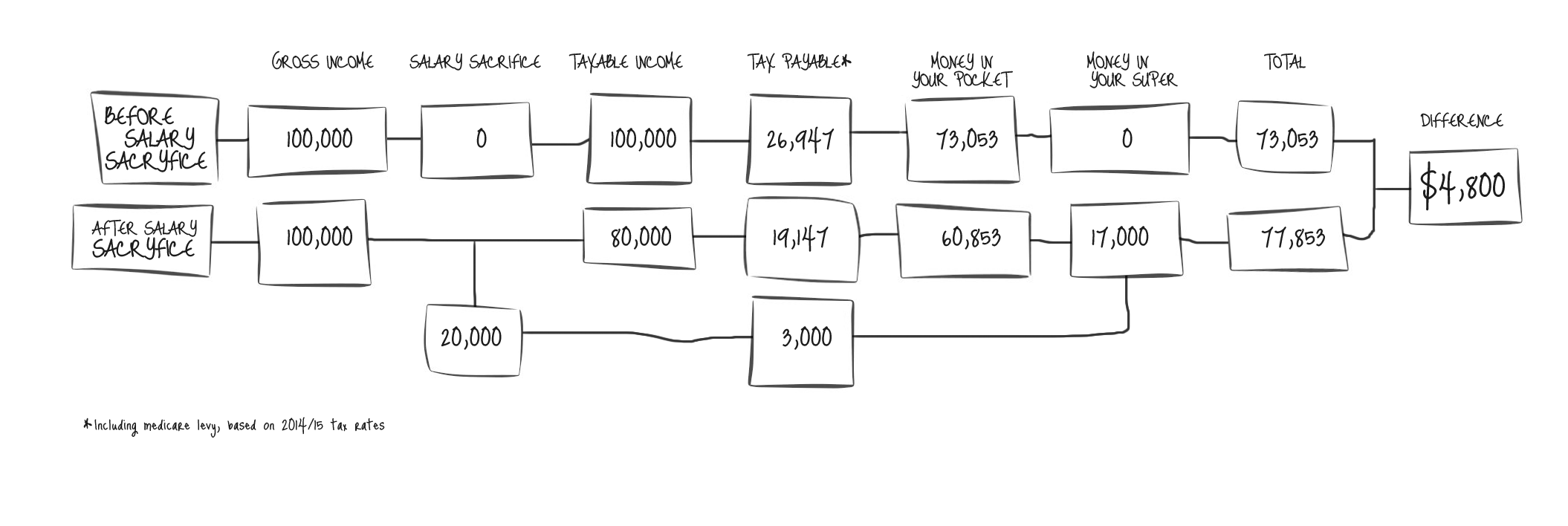Getting Ready
Part 5: The Best Strategies to get ready for retirement

The best strategies to get ready for retirement
The number of strategies available to you to build your retirement wealth is endless. Typically you will want to focus on:
- Superannuation: Getting as much money as you can into superannuation because you can save tax when you contribute and in retirement (after age 60) it is a tax-free environment meaning all the money your super makes and all the money you take out are tax-free.
- Debt: A plan to make sure you are debt free by the time you retire. This could be a repayment plan over time, or an often overlooked strategy is contributing extra to super in lieu of paying down debt and then withdrawing from super at retirement to extinguish debt.
The key is having a clear plan that maps out your future retirement goals regarding regular income and one off lump-sum requirements and then reverse engineering a personalised strategy from that point to your current position.
There is no one shoe fits all approach when it comes to getting ready for retirement. The key is to have a detailed understanding of ALL of the various options available to you. You then need to consider the pro’s and con’s of each of these options and do some detailed calculations of your potential future positions to decide which is right for you.
As Superannuation is a very popular and powerful tool for saving for retirement due to its tax concessions, we have outlined some of the best strategies you can employ to boost your superannuation for retirement below.
Please also read our article “Debunking the myths about superannuation”
Salary sacrifice into super
This is a strategy where you instruct your employer to put a portion of your salary directly into your super rather than paying it to you. Since the salary sacrificed amount is not paid to you directly, you do not pay income tax on it. Instead, money that is salary sacrificed to superannuation is taxed at a flat rate of 15% called Contributions Tax.
The value of this strategy is the difference between the flat 15% contributions tax and your marginal tax rate. As of 2014/15 anyone who earns over $37,000 pays tax of 34.5% on the dollar, anyone who earns over $80,000 pays 39% and $180,000+ is 49%¹.
The below example shows the value of a salary sacrifice strategy for someone who earns $100,000 pa and salary sacrifices $20,000 into their super fund.

Non-Concessional Contributions
Non-concessional contributions – Also known as post-tax contributions, are those contributions, which are made from funds where tax has already been paid to the government.
- Salary being deposited in your bank account after tax has already been withheld. If you are maximising your concessional contributions already and would like to contribute further, you still can.
- Deposits in your bank accounts.
- Proceeds from sales of other investments.
- Any lump sum amount in your possession.
The maximum allowable post-tax contribution is $180,000 per person, per year. You can also contribute 3 times that amount as a one-off, provided you don’t contribute another dollar (post tax) for the next 2 years after the current year. So you can contribute up to $540,000 in 2015/16, provided you don’t make any further non-concessional contributions in 2016/17 and 2017/18. You can then do the same again, as long you are under the age of 65.²
Since the contribution is ‘post-tax’, which means the government has already collected tax on the money somewhere prior, all the funds get contributed at 100% of their value. No tax is paid when the funds are deposited into super. The $180,000 deposited goes in tax-free. It also forms part of your tax-free component within your super fund. While your pension may be tax-free post 60, upon death, your money is still broken down into taxable and tax-free components. All the concessional contributions will always form part of the taxable component, while the non-concessional contributions form part of the tax-free component. The tax-free component could save your children a large amount of money on inheritance.
¹ All figures are inclusive of 2% Medicare levy.
²





